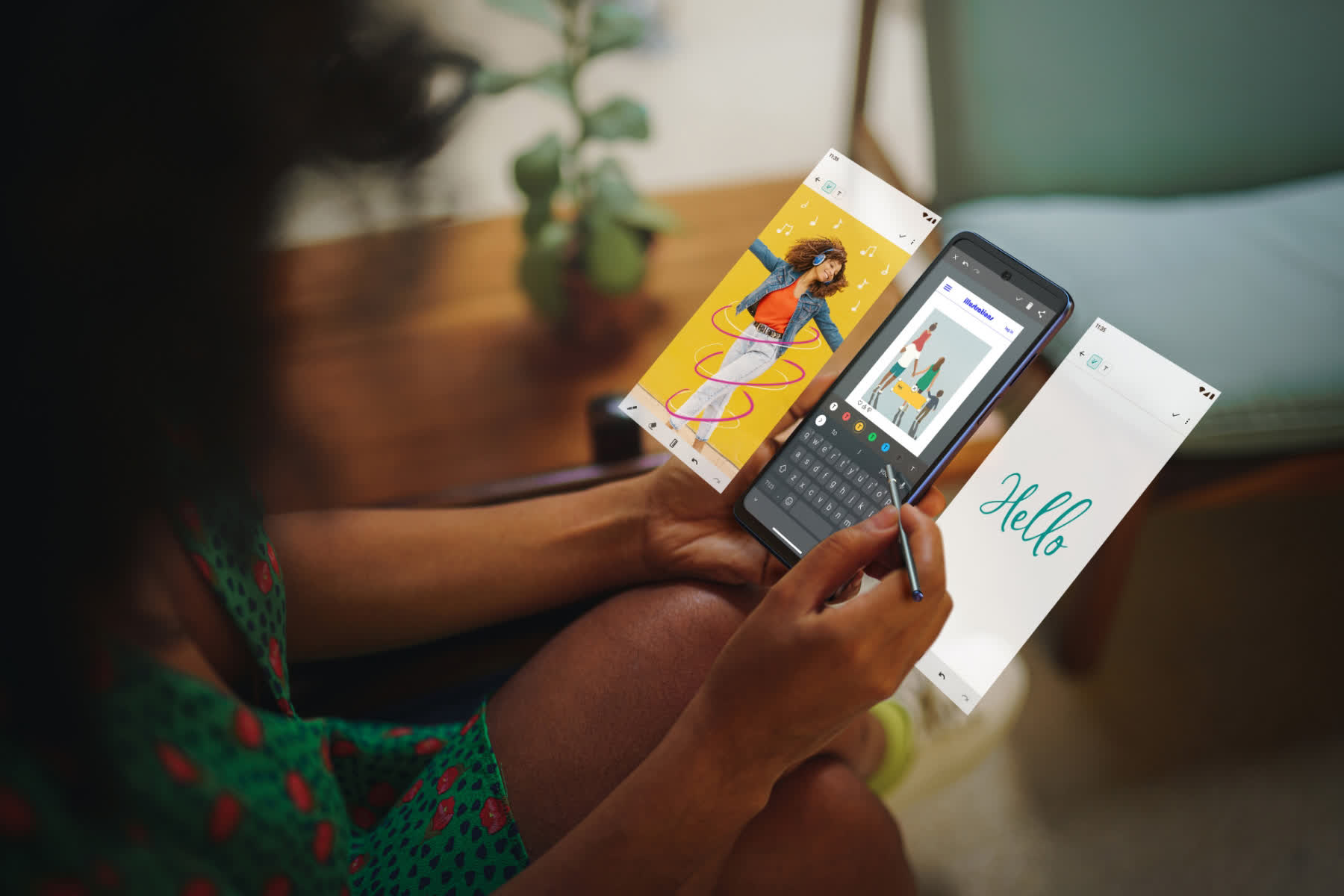Forward-looking: Motorola is expanding the G phone series with a new G Stylus phone. Named after its predecessor, the new Moto G Stylus 2022 may look a lot like the 2021 model, but on the inside, Motorola changed it quite a bit, even if in some cases for the worse.

It's common for Motorola to announce new phones during the Mobile World Congress, but it seems that the company decided to change things up. Although we are still a few weeks from the conference, Motorola has revealed to the public the new Moto G Stylus 2022.
The handset is available in metallic rose and blue and shares many visual aspects with 2021's model. It has identical dimensions, weighs a bit more, and the buttons and fingerprint reader are in the same areas. However, there are a few design differences, including the placement of the selfie camera and the format of the rear cameras module.
The G Stylus 2022's screen uses a 6.8-inch display with a 1080x2400 resolution and a 90Hz refresh rate, a considerable upgrade over the 60Hz of its predecessor. Motorola also improved the battery, upgrading it to a 5000mAh capacity cell that the manufacturer says will last for two days.

Based on Android 11 with a My UX skin, the handset has 6GB of memory and 128GB of storage, but you can expand by an extra 512GB with a microSD card. Motorola decided to go with the MediaTek G88 for the SoC, a downgrade compared to the Snapdragon 678 of the 2021 model. Still, the 90Hz display is only possible because of MediaTek's SoC, so you basically lose performance for a faster display.
The rear-facing camera is a 50MP shooter with an 8MP ultrawide + macro lens and a 2MP depth sensor. On the front, there's a 16MP camera for selfies.
The opportunity to refresh the Moto G Stylus would lead us to believe that Motorola would add 5G and NFC support, but that wasn't the case. However, it supports other necessary connectivity technologies, like Bluetooth 5.0 and dual-band Wi-Fi.
Motorola guarantees the device will have two years of security updates, so we assume that an upgrade for Android 12 will be coming. You can now pre-order it for $299.99.
https://www.techspot.com/news/93250-refreshed-moto-g-stylus-2022-gets-faster-display.html